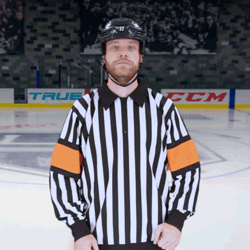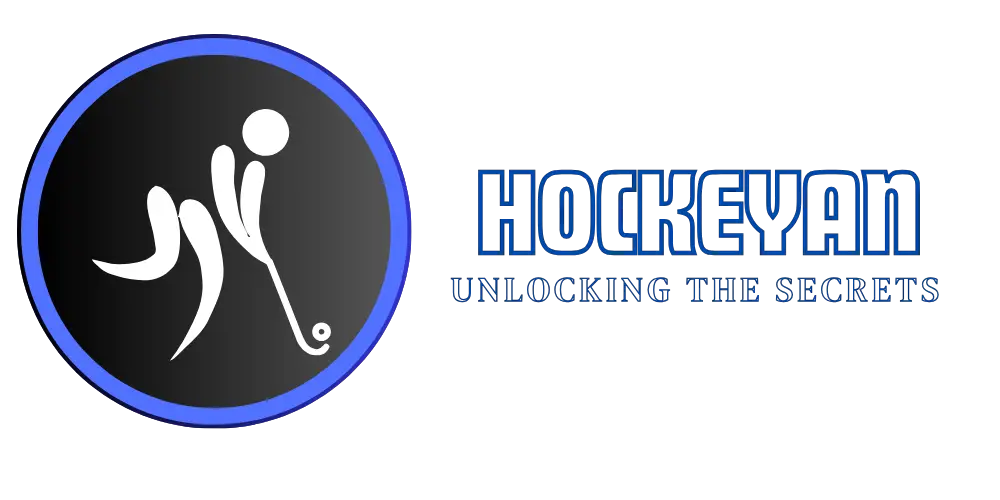A boarding penalty in hockey occurs when a player checks an opponent dangerously into the boards. This can lead to serious injuries, and it is penalized to ensure player safety.
Hockey is a fast-paced and physical sport. Players often check each other to gain control of the puck. But not all checks are legal. A boarding penalty happens when a check is too aggressive and forces a player into the boards.
This can cause severe injuries, making it a critical rule for player protection. Understanding this penalty helps fans appreciate the game’s safety measures. It also shows the balance between physical play and sportsmanship. In the next sections, we will explore the details and implications of a boarding penalty in hockey.
Credit: thehockeywriters.com
Boarding Penalty Basics
The boarding penalty is a key rule in hockey. It ensures player safety. It penalizes players who check an opponent dangerously into the boards. This rule helps prevent injuries and maintains fair play.
Definition
A boarding penalty occurs when a player pushes or checks an opponent violently into the boards. The boards are the walls surrounding the rink. This type of hit can cause serious injury. Referees call this penalty to keep the game safe.
Common Situations
Several situations can lead to a boarding penalty. Here are a few examples:
- A player hits an opponent from behind into the boards.
- A player checks an opponent who is in a vulnerable position.
- A player uses excessive force during a check near the boards.
| Situation | Description |
|---|---|
| Hit from Behind | The player is struck from behind into the boards. |
| Vulnerable Position | The player is checked while off-balance or facing the boards. |
| Excessive Force | The player uses too much force, risking injury. |
Understanding these basics helps fans and players recognize dangerous plays. Following the rules ensures everyone can enjoy the game safely. Stay aware of these situations and respect the integrity of hockey.

Credit: www.youtube.com
Rules And Regulations
Understanding the rules and regulations of a boarding penalty in hockey is crucial. It ensures fair play and safety for all players. Let’s dive into the specifics of these rules.
Nhl Guidelines
The NHL has strict guidelines for boarding penalties. A player receives a boarding penalty if they check an opponent into the boards in a dangerous manner. The severity of the penalty depends on the impact and intent. The penalties can range from a minor penalty to a game misconduct.
| Type of Penalty | Duration |
|---|---|
| Minor Penalty | 2 minutes |
| Major Penalty | 5 minutes |
| Game Misconduct | Player ejected |
A minor penalty is given for less severe infractions. A major penalty is for more dangerous hits. A game misconduct penalty means the player is ejected from the game. These penalties help to maintain player safety and game integrity.
International Rules
International hockey rules differ slightly from the NHL. According to the International Ice Hockey Federation (IIHF), a boarding penalty can also lead to a match penalty. This means the player is not only ejected but also faces further disciplinary action.
- Minor Penalty: 2 minutes
- Major Penalty: 5 minutes
- Match Penalty: Ejection and further review
The IIHF emphasizes player safety. They impose stricter penalties for dangerous plays. This ensures a safer environment for all players.
Consequences Of Boarding
Boarding in hockey is a serious offense. It can lead to severe consequences. The act of boarding occurs when a player checks another player violently into the boards. This can result in injuries. Because of the potential harm, penalties are strict.
Penalties
Penalties for boarding can vary. A minor penalty lasts two minutes. A major penalty lasts five minutes. An additional game misconduct penalty might be added. This means the player is ejected. The team must play without them. This can affect the game’s outcome.
Player Safety
Player safety is a top priority in hockey. Boarding can cause serious injuries. These include concussions and broken bones. The rules aim to protect players. Enforcement of boarding penalties helps deter dangerous behavior. It ensures the game remains safe and fair.
Notable Incidents
Boarding penalties in hockey are serious. They involve dangerous physical play. Such incidents can change games and careers. Below, we discuss some famous cases and their impact on the game.
Famous Cases
Several boarding incidents have made headlines over the years. Here are some of the most notable:
- Dale Hunter on Pierre Turgeon (1993): Hunter was suspended for 21 games. He hit Turgeon from behind after a goal.
- Matt Cooke on Fedor Tyutin (2011): Cooke received a four-game suspension. Tyutin was hit from behind into the boards.
- Raffi Torres on Marian Hossa (2012): Torres was suspended for 25 games. The hit left Hossa with a severe concussion.
Impact On The Game
Boarding penalties can have significant impacts:
- Player Safety: Reducing dangerous hits protects players’ health.
- Game Suspension: Players often face long suspensions. This affects team dynamics.
- Rule Changes: Notable incidents lead to stricter rules. This helps prevent future injuries.
The NHL continues to take these incidents seriously. The focus is on player safety and fair play.
Preventing Boarding
Boarding is a serious penalty in hockey. It happens when a player checks another player violently into the boards. This can lead to injuries. Preventing boarding is crucial for player safety.
Coaching Techniques
Coaches play a vital role in preventing boarding. They need to teach players the correct way to check opponents. Here are some key techniques:
- Proper Stance: A balanced stance helps control checks.
- Controlled Force: Use enough force to stop the opponent, not to injure.
- Awareness: Be aware of your surroundings and the opponent’s position.
- Angle Checking: Approach the opponent at an angle to avoid hitting the boards directly.
Player Responsibilities
Players also have a responsibility to prevent boarding. They must stay aware and play clean. Here are important points for players:
- Respect Opponents: Treat all players with respect. Avoid dangerous plays.
- Stay in Control: Keep control of your body and stick.
- Communicate: Talk to teammates to avoid collisions.
- Know the Rules: Understand the rules about boarding and follow them.
Preventing boarding in hockey is essential. Coaches and players both play roles in this. By using proper techniques and staying aware, we can keep the game safe for everyone.

Credit: www.hockeymonkey.com
Frequently Asked Questions
What Is A Boarding Penalty In Hockey?
A boarding penalty occurs when a player checks an opponent violently into the boards.
How Long Is A Boarding Penalty In Hockey?
A boarding penalty can result in a two-minute minor or five-minute major penalty.
What Is The Difference Between Minor And Major Boarding Penalty?
A minor boarding penalty lasts two minutes. A major boarding penalty lasts five minutes.
Can A Boarding Penalty Lead To A Game Misconduct?
Yes, severe boarding penalties can lead to a game misconduct and ejection from the game.
Why Is Boarding Penalized In Hockey?
Boarding is penalized to prevent dangerous hits and protect players from serious injuries.
What Happens If A Player Is Injured By Boarding?
If a player is injured, the penalty can be elevated to a major penalty or game misconduct.
How Do Referees Decide On A Boarding Penalty?
Referees assess the impact and intent of the hit to determine the penalty severity.
Are There Any Exceptions To Boarding Penalties?
No, boarding penalties are enforced strictly to ensure player safety and fair play.
Can Boarding Penalties Be Reviewed By Officials?
Yes, referees can review boarding penalties to ensure the correct call is made.
Conclusion
Understanding a boarding penalty is essential for hockey fans. It keeps players safe and the game fair. Remember, boarding happens when a player hits another into the boards dangerously. Knowing this rule helps you appreciate the sport’s discipline. Hockey is thrilling, but safety must come first.
Stay informed, enjoy the game, and respect the rules. This knowledge enhances your viewing experience. Stay engaged and support your favorite team with confidence.




